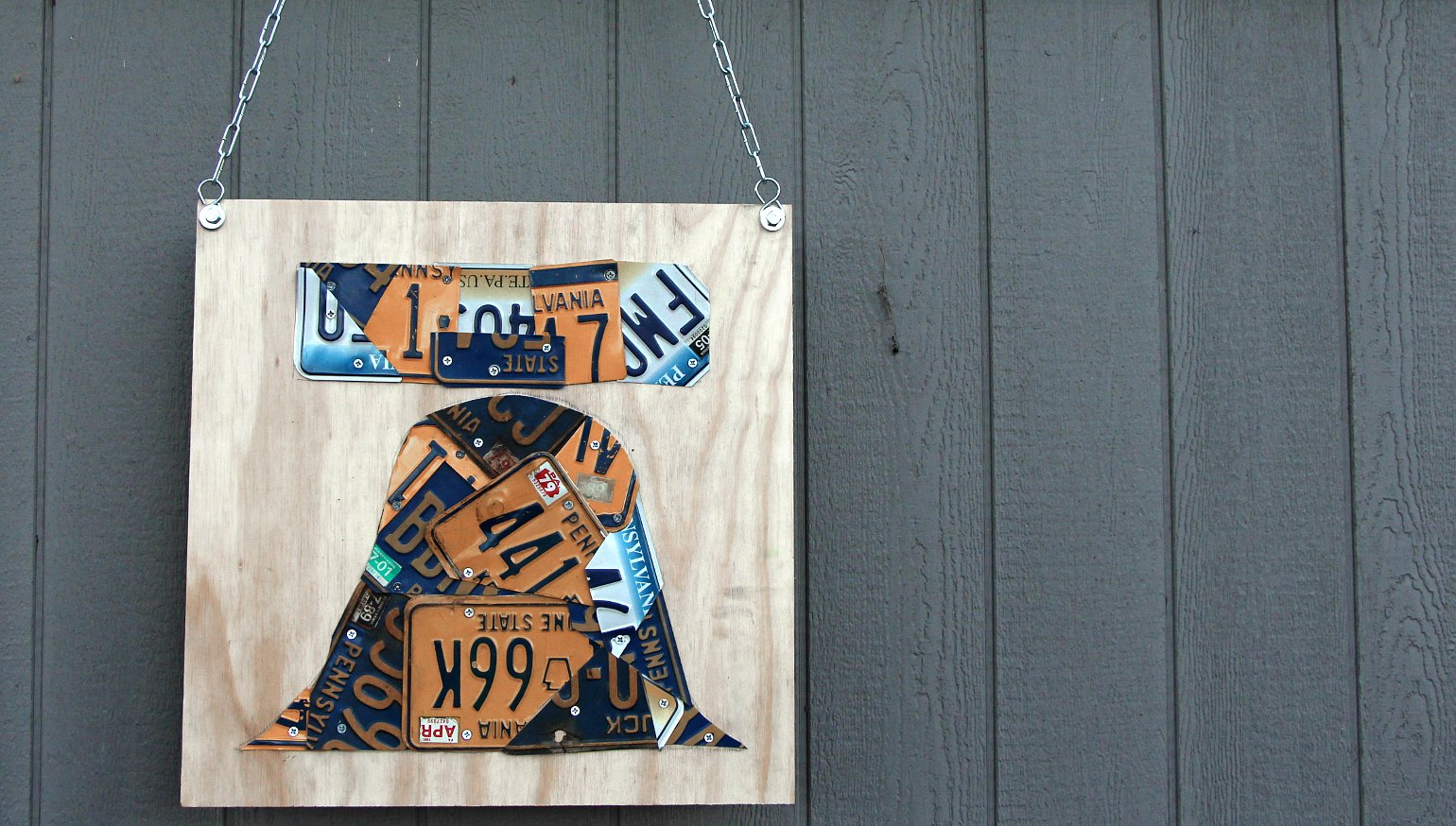You know, tapas. Small plates. Like the one on the back of your bike.
If you are reading this and you don’t have a dirt bike, you’ve probably got a license plate, and some opinion about them. (The number of tail-tidy kits RevZilla sells is positively unholy, so my guess is your opinion is likely to be a negative one.)
This is one of those weird areas of motorcycling where I have an odd fetish — I will spend some coin for neat license plate tchotchkes. Here are some of the little curiosities about tags that I’ve come across over the years and some the oddities I’ve picked up that live on my shelves.
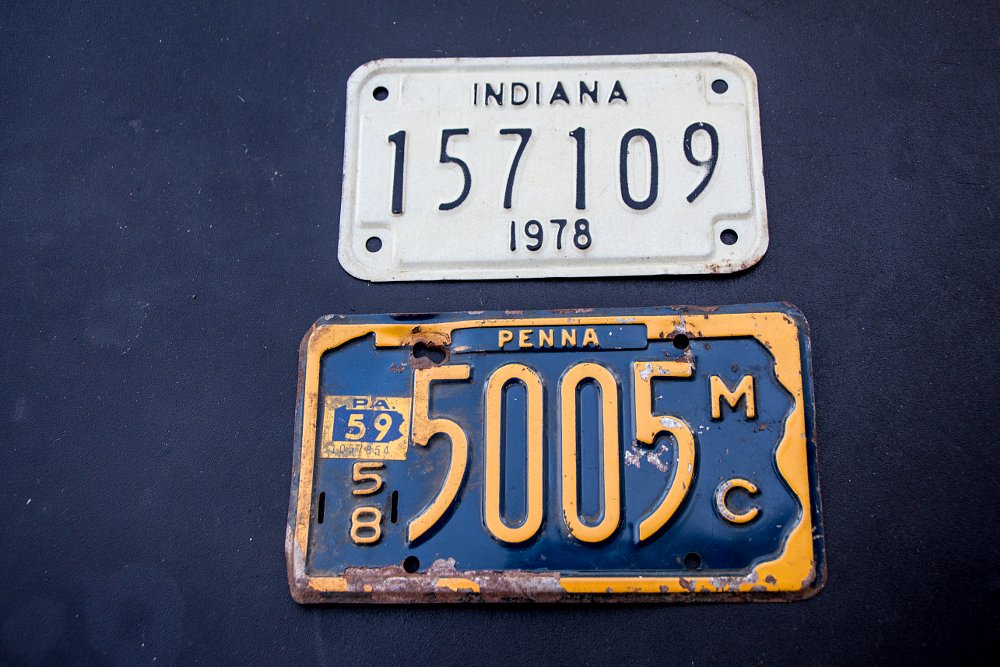
Little plates
Automobile plates were more or less standard in size by 1956. Motorcycles, though, slipped through the cracks in the USA for a long time. The dimensions often differed from state to state, as did the fastening arrangement. (Mounting holes? How big are they? Or are they slots? And what’s the distance between them? Are the mounting holes on the top of the plate, the bottom, or both?)
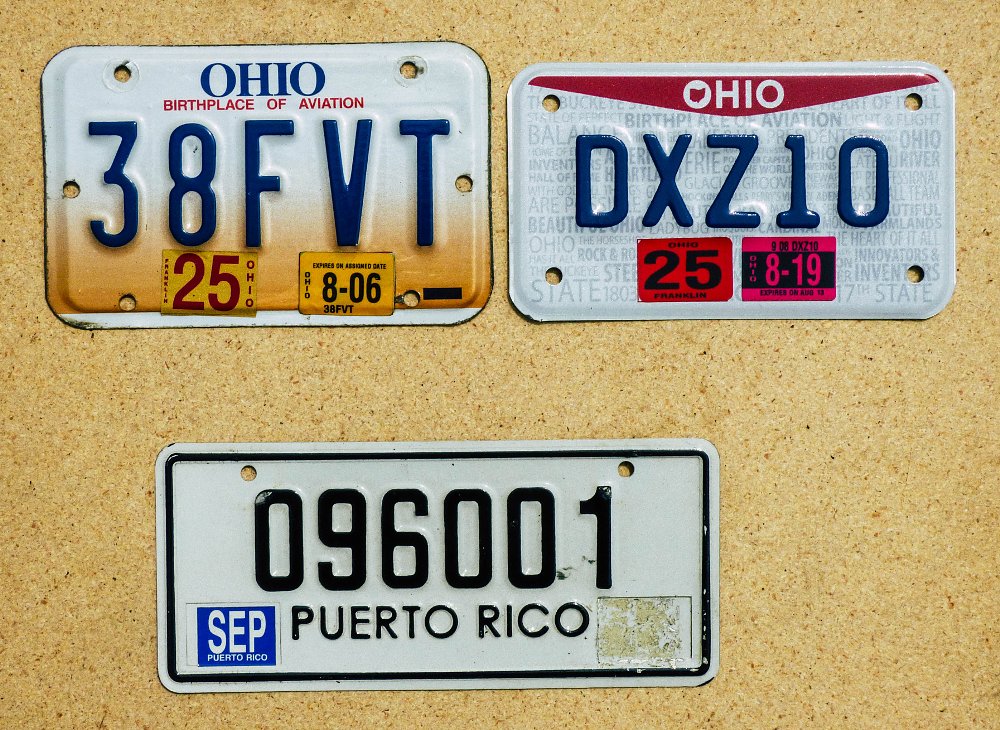
The variation is enough to make you pull your hair out sometimes, especially when fabricating related items. Now, nearly all states use the fairly common size of seven inches by four inches, with quarter-inch holes 5.75 inches apart, but in the past, those dimensions varied by quite a bit.
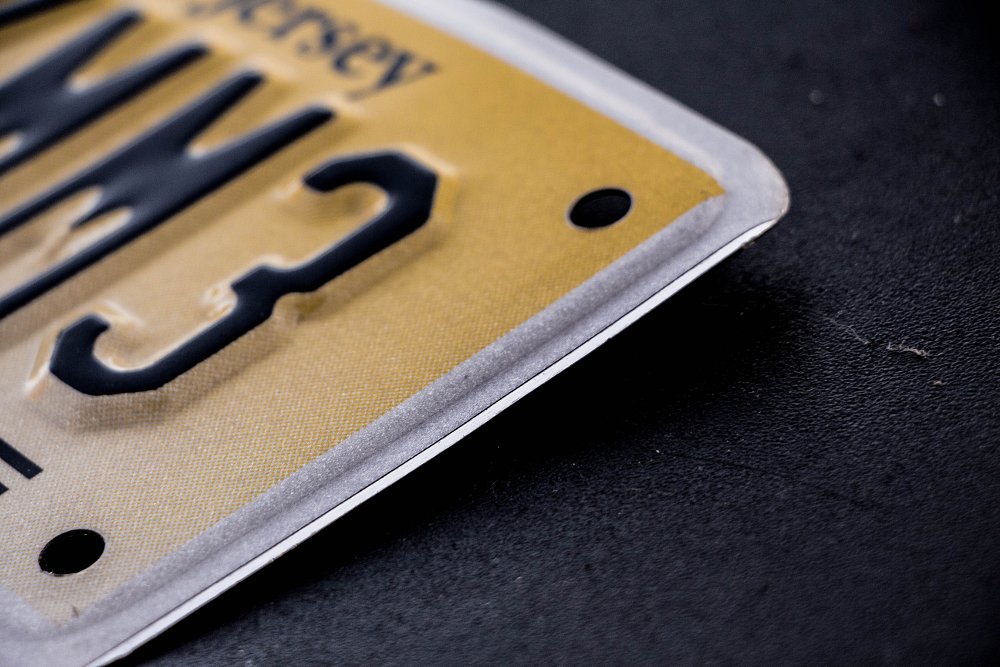
Reflectivity
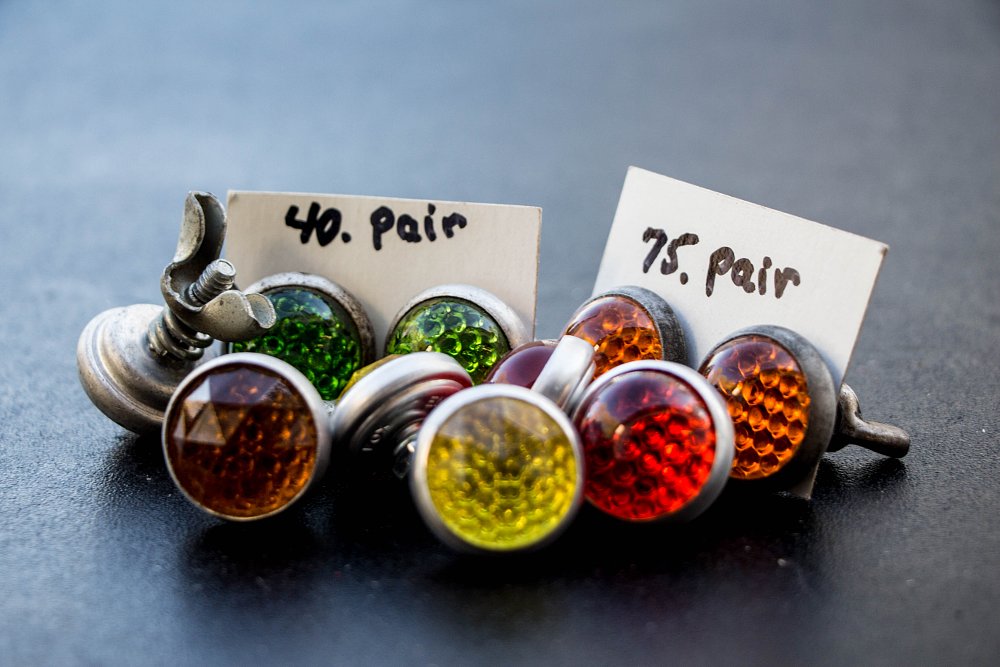
Modern license plates now often incorporate reflective sheeting to aid visibility. (In fact, the whole plate is often wrapped in that sheeting to achieve graphic permutations that aren't possible or economically viable with paint.)
However, riders brought visibility to their tags in a different way that you're probably familiar with.
Fasteners
One of my personal guilty pleasures are “gum drops” or “owl eyes,” the jeweled reflectors formerly used to bring conspicuity to motorcycles on the road. Staying safe at night is certainly not a new concept.
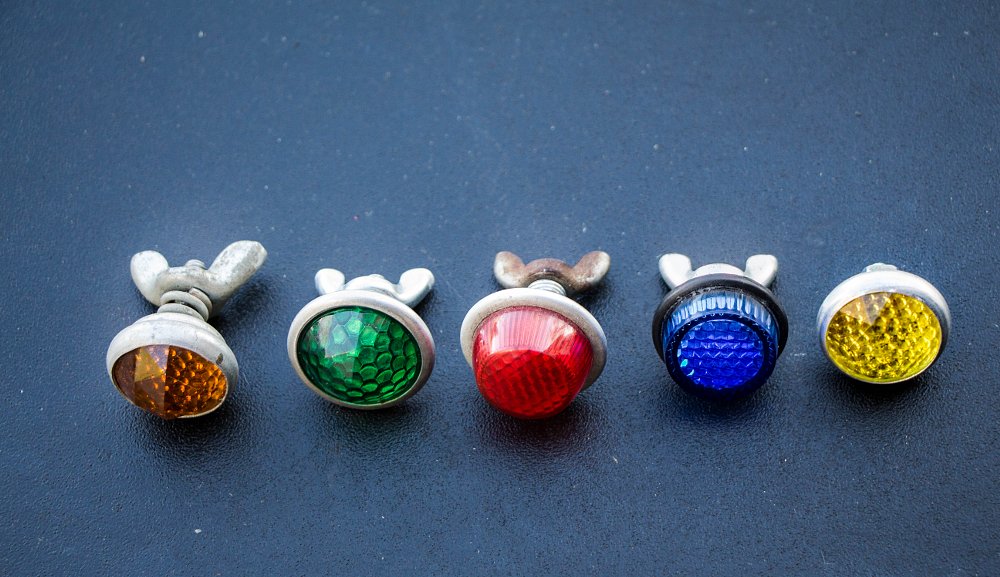
They’re fun little pieces that have been around for nearly as long as motorcycles have. Hell, if you have a modern bike, you probably have a set of reflector bolts on your plate that your dealer stuck on there for ya. There’s other cool knickknacks that go along with these, like plate frames, license plate toppers, and plate surrounds, but leave it to motorcyclists to modify even the hardware that holds on your stupid state-mandated tag.
Vert-mount
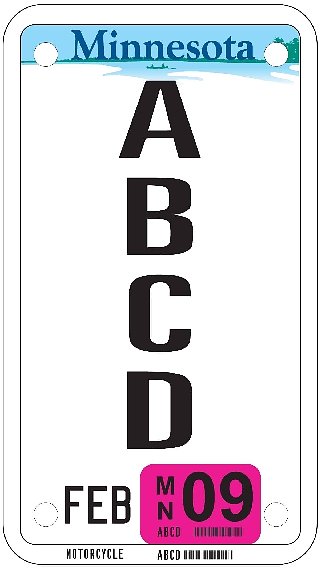
Material
Early license plates in many places were porcelain baked onto ceramic. They were pretty delicate. Plates have even been made of cardboard and pressed soybeans in the past! That was largely due to material conservation during the war. Nowadays, they’re almost all aluminum to minimize rust, but steel was a popular choice for a long time, as well.
Of course it’s dangerous, it’s a chopper
I have a fairly boring-looking plate frame on one of my motorcycles because it’s actually a recalled item, from what I understand. I bought it from a buddy who wasn't real familiar with the piece's outlaw history.
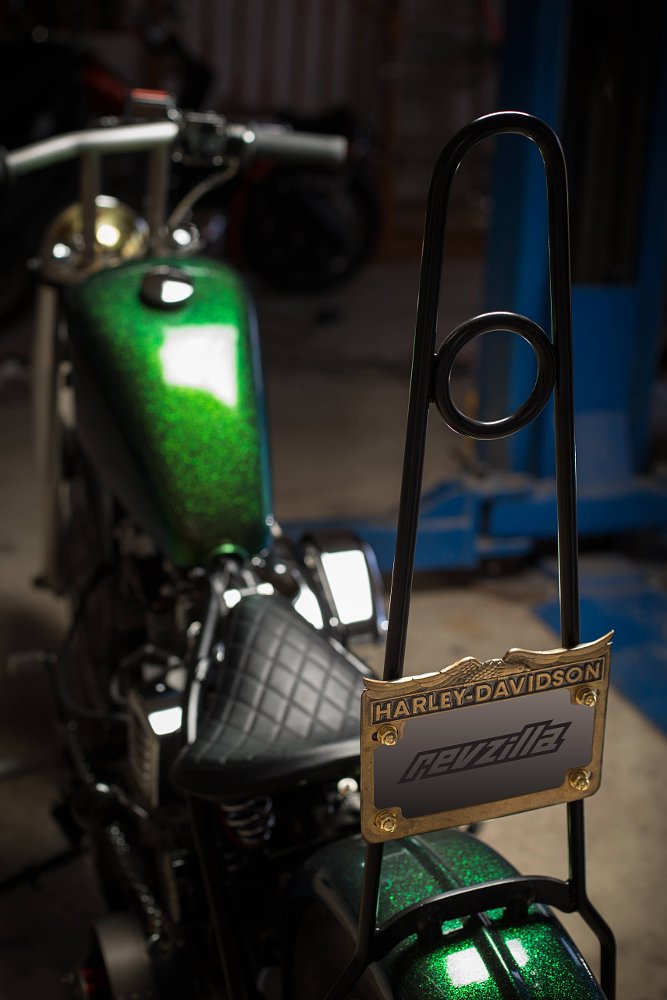
This brass surround was an interesting aftermarket piece sold through Harley-Davidson through a brand they schemed up years ago called Eagle Iron. Evidently, the item was pulled quickly because of the eagle’s wing tips; they apparently represent a bit of a safety hazard due to their...poke-y-ness?
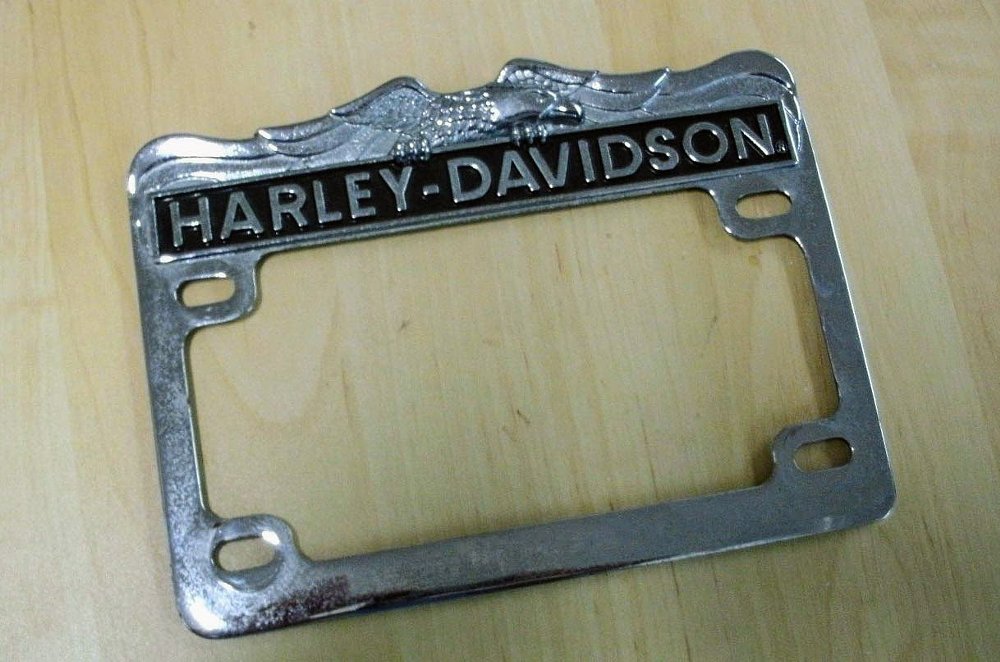
I’ve seen what I presume are subsequent revisions of this piece, and all either moved the eagle to the bottom of the plate, or furled the wing tips. The recalled version is actually surprisingly hard to find, so I think it’s nifty to have a little oddity on one of my motorcycles.
Front plates
At the time of this writing, some states permit automobiles to run one plate. (This is usually on the rear of a vehicle, though in some places trucks run only a front plate, on the understanding they will typically be towing something that would obscure a rear plate.) However, motorcycles in all 50 states, to my knowledge, are required to show only a rear plate.

But it hasn’t always been that way. New Jersey used to require front and rear plates for motorcycles for a short time! Here, check out a couple in action from way back when.
YOM plates
Oh, man, here’s one spot where I go buck wild. In addition to the historic or antique plates issued by many jurisdictions, many states permit antique bikes to display year-of-manufacture plates. You find an old plate, pay a chunk of dough, and then you can run your old plate on your old bike. Every state has its rules and regs and loopholes to make things fly, but it’s pretty fun to see what you can find and what might have been on your old motorcycle when it rolled out of the factory.
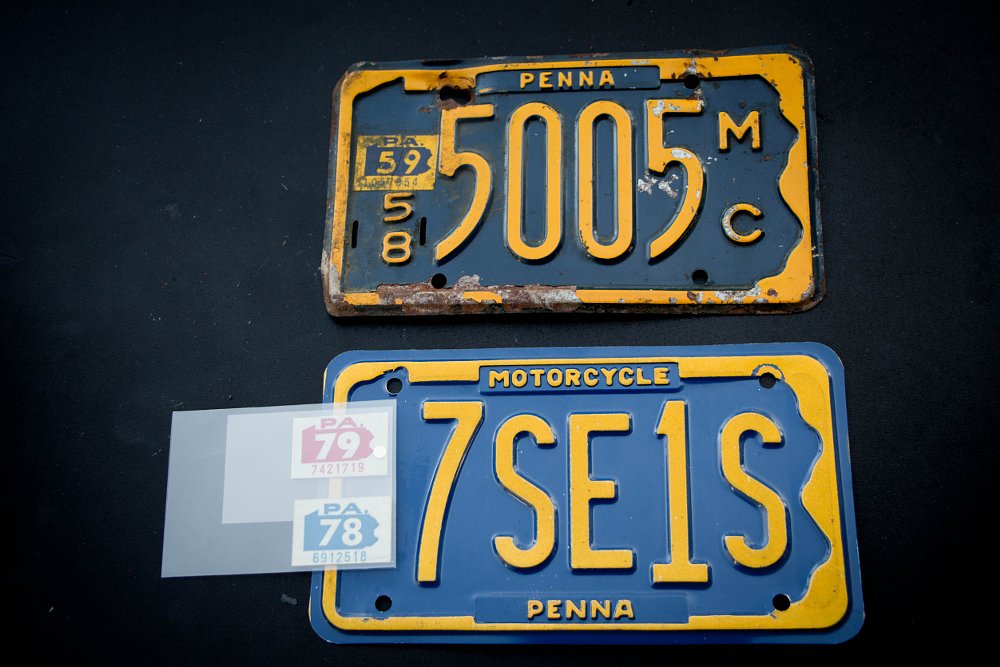
If you’re interested in exploring this at all, you may well become a low-level expert, researching what was used, when it was used, and what’s available and legal to be run now. I have a few bikes that wear YOM plates, and also have some of the plates of their previous owners from other states. They’re neat little reminders that many motorcycles have lived through a few different riders in different places.
License plates are a necessary evil. Why not enjoy ‘em?




